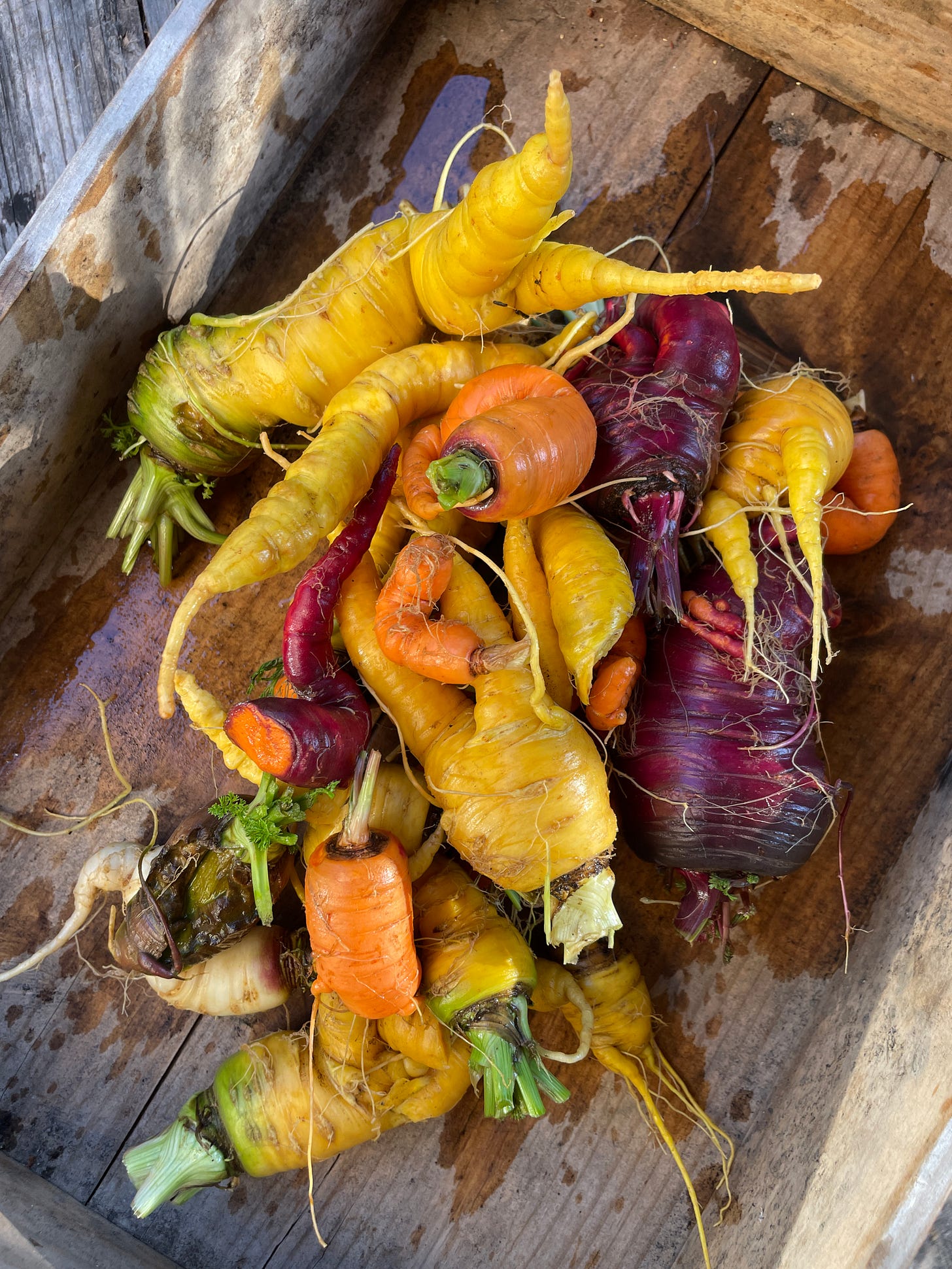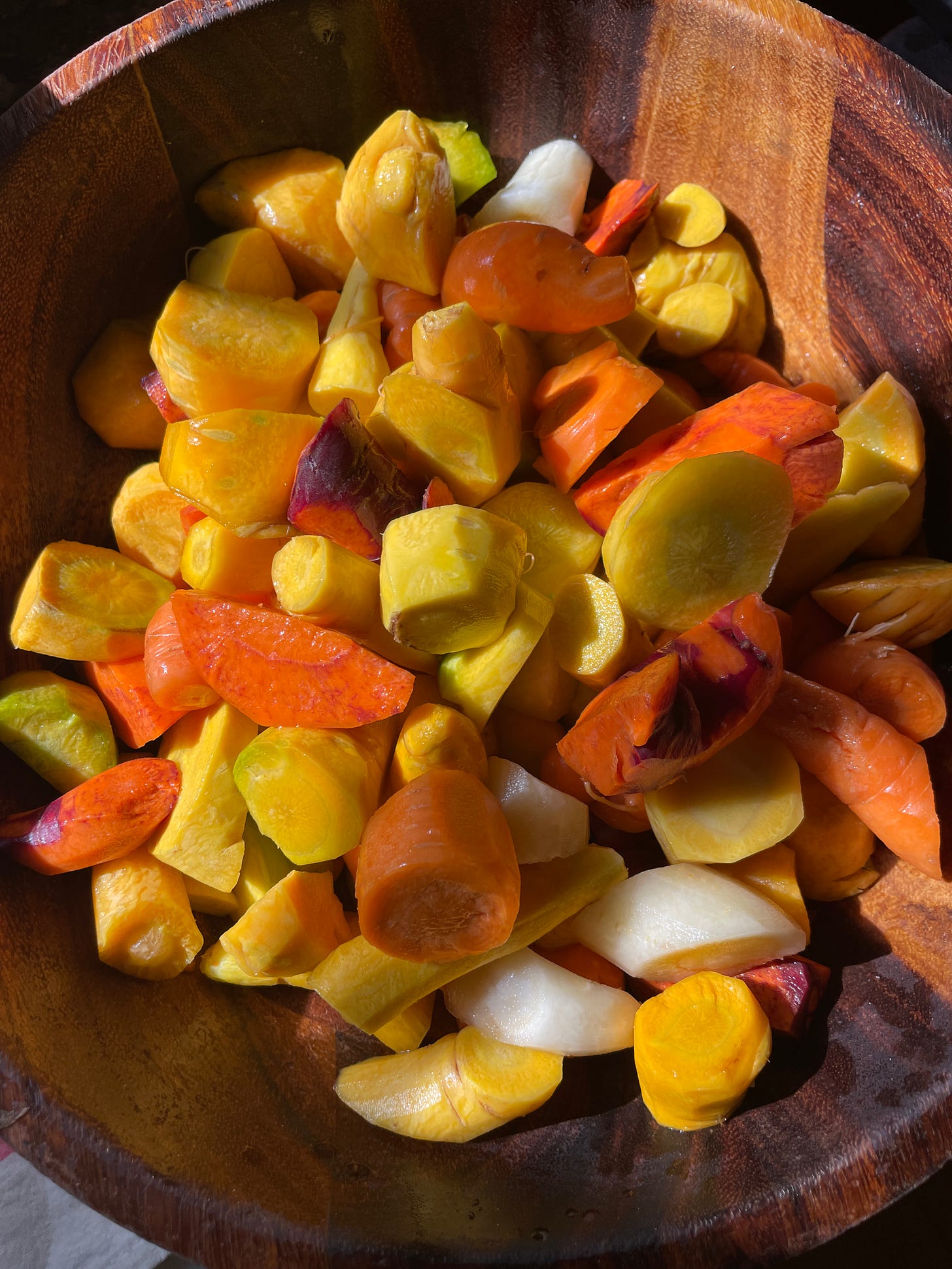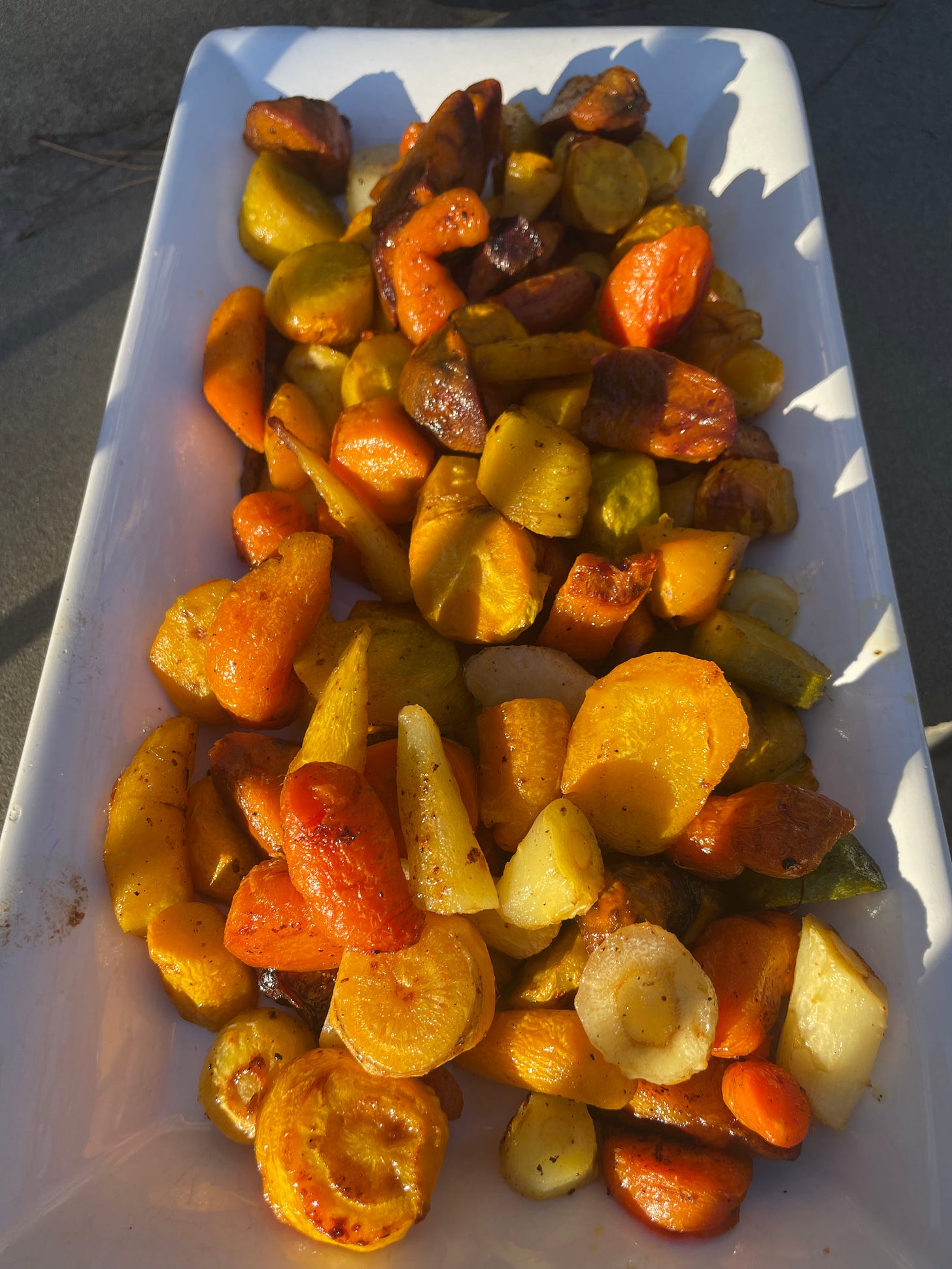“Gnarly” isn’t a word I have ever heard used in the context of food. Talk to a surfer, and it’s the intense challenge of a wave ridden triumphantly or a wash of defeat. “Gnarly” can have different meanings based on context and is used literally or figuratively—a bad accident, a complicated problem, a contortion—the trunk of an old olive tree, your old grandmother’s fingers—or something disgusting. Whether it’s good or bad, gnarly modifies some form of intensity.
The straggler carrots I pulled from a neglected garden patch are gnarly and aberrant, but I find them intensely interesting. What happened to these poor taproots? I cast seeds in a corner bed and forgot about them for the better part of a year until recently, when I cleared their plot for the next planting. I hadn’t tilled the ground before, and they ran into hardpan. Apparently they tried every which way to go down. Some contracted in the fetal position; several grew a second and third leg, and others pushed out hairy feeler roots as if to search the ground for direction. Carrots need loamy clearance to grow straight. I admired their nimbleness in circumventing the obstacles. I weighed whether I should commit these stalwarts to the compost heap, but then, cutting away the stems and leaves and clearing the dirt clinging to their skins, I was amazed at their vivid colors and weird shapes and didn’t have the heart to let them go.
I wondered how they came to be. Were they yet more hybrids driven by a marketing scheme and consumers’ insatiable appetite for the new and colorful? I was surprised to discover otherwise. The domesticated carrot is believed to have originated in Persia (modern-day Iran and Afghanistan) around the 1st millennium BCE and was primarily cultivated for its leaves and seeds. Carrots spread from Afghanistan to the eastern Mediterranean in 900–1000 AD and to Western Europe and China in the 1300s. European colonization brought carrots to the Americas. Ancestral carrots were largely purple, white, and yellow. The familiar orange carrot we know today did not become prominent until much later when Dutch farmers began selectively breeding carrots for an orange coloration as a tribute to the House of Orange, a prominent royal family. Today, the color orange is a national symbol in the Netherlands and represents Dutch unity and pride, displayed during national celebrations, particularly on King's Day and during sports events. The orange carrot dominated the market due to its vibrant color, annunciating presence, and sweet taste. Other colors fell out of favor as they were often seen as less desirable. But they’ve made a comeback. With rising consumer interest in heirloom vegetables and colorful cuisine, “Harlequin” or “Rainbow” carrots, as they are called, continue to gain popularity and are a staple in both specialty and mainstream markets, sporting white, yellow, red, and deep ‘cosmic purple’ skins with distinct flavors.
I’ve never been a fan of “baby vegetables,” especially in the case of carrots, which are supposedly sweeter and more delicate in the miniature state. Large mature carrots have a much more intense, complex flavor that can include a pleasant bitterness or spiciness due to the accumulation of certain phytochemicals. They also are denser, have tougher skins, and are sometimes more fibrous due to the development of lignin and cellulose in their cell walls. My gnarly carrots have all of these attributes. Washing, peeling what I could around their bends and twists and errant legs, and cutting them into pieces awakened a fragrance I could smell from 3 feet away. Their raw flavor was intense, off-sweet, vegetal, slightly alkaline, unmistakably carrot that lingered in the aftertaste.
I was reminded of Masanobu Fukuoka’s influential treatise, The One Straw Revolution, and his philosophy of “do nothing farming,” a form of wild cultivation. Fukuoka believed that crops grown in natural, undisturbed (no tillage) environments would be healthier, more nutrient-dense, and have enhanced flavor because they had been grown in harmony with the soil, climate, and ecosystem. I did it much less consciously and was rewarded with this small, extreme harvest.
Who hasn’t heard from her mother: “Eat your carrots; they’re good for your eyes!” The myth that eating carrots improves eyesight, particularly night vision, became popular in World War II. The British Royal Air Force promoted the idea that their pilots had improved night vision due to eating large quantities of carrots, part of a propaganda effort to explain its success in shooting down German planes without revealing their use of radar technology. The notion was a way to encourage citizens to grow and consume more vegetables during wartime rationing. While the myth exaggerated the extent to which eating carrots could improve eyesight, it’s true that carrots are high in beta-carotene, which converts into Vitamin A, essential for maintaining good vision, particularly in low light,
I wondered how I might cook or otherwise prepare these roots gone wild. I thought of the many ways in which carrots can be used: in soups, roasted, as plain juice from the health food store, smoothies, baby food for a new parent, chips, flakes, pickles and powder, grated for use in cake or pudding or blended with fruits for jams and preserves. I decided to roast them with butter, salt, and pepper, allowing their rich flavors to become even more vivid. From that overlooked patch in my fortunate garden, they made their way to a grateful table.
If you find yourself connecting with the work here, consider upgrading to paid. With a yearly subscription, you’ll have access to the full archive of all posts, the ability to join the thoughtful conversations in the comments section, and the knowledge that you support independent journalism.






